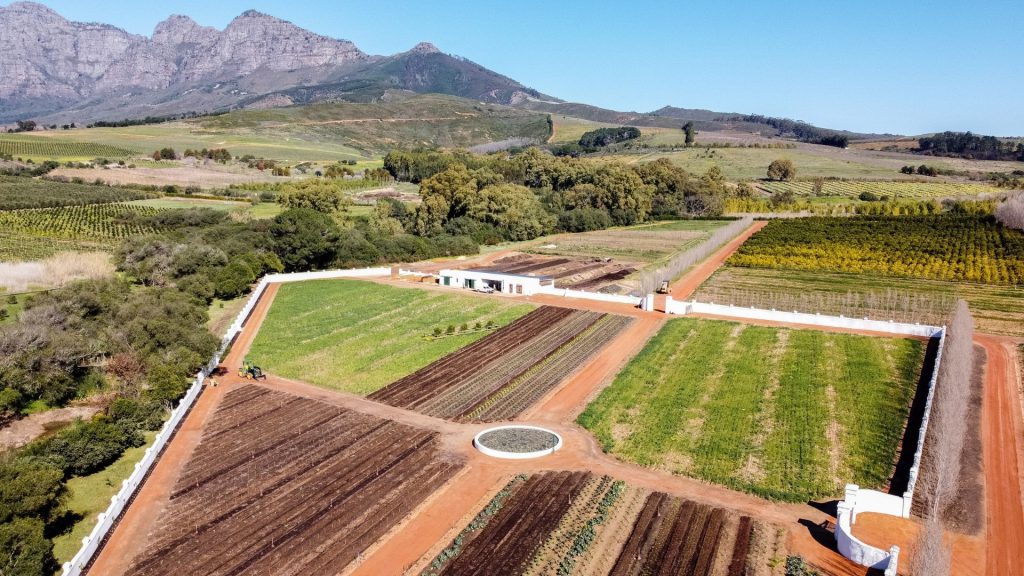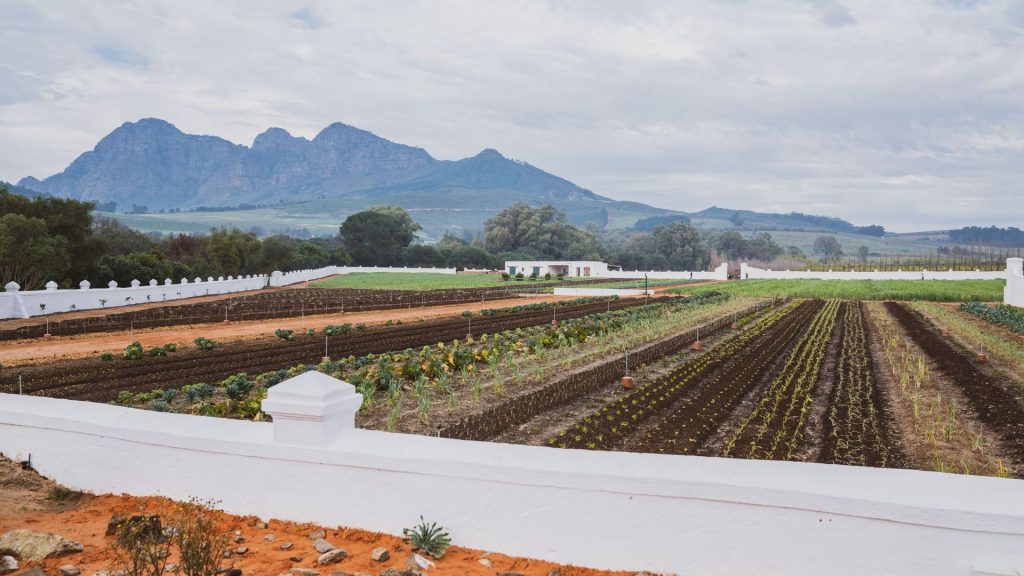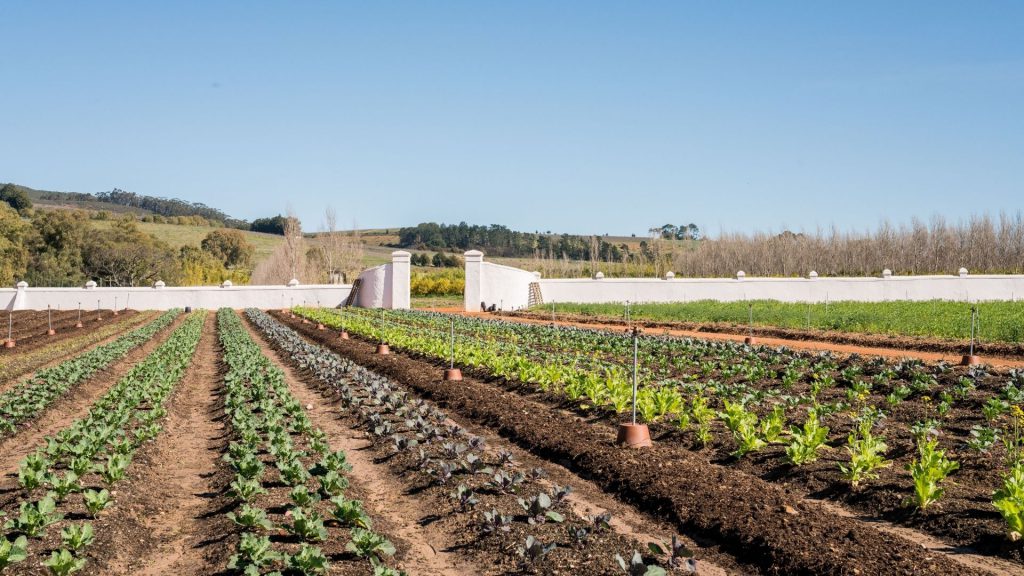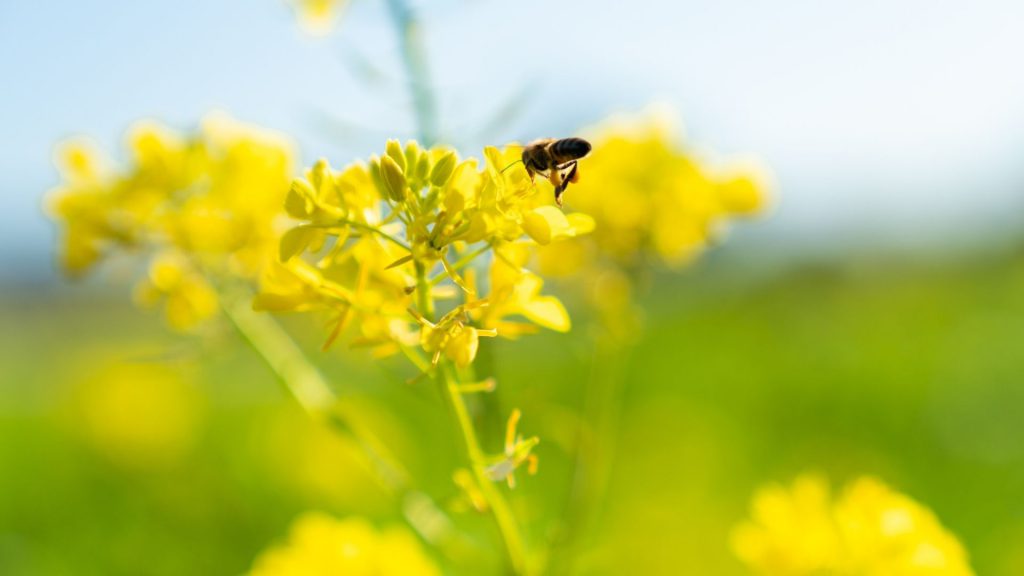
Restaurants
Spa
Day Visits
Shop
Functions
16°C
September 22nd, 2021
Any gardener will tell you that a garden is never ‘finished’ – it is constantly evolving and growing, adapting to the changing seasons.

We’ve recently expanded our kitchen garden to accommodate the growing demand for freshly harvested vegetables for our Farm Fresh boxes and our two restaurants, Babel and the Greenhouse. This one-hectare patch named moestuin (kitchen garden in Dutch) offers our gardeners ample space to plant an even wider variety of vegetables and herbs for our farm.
In keeping with the typical Cape Dutch building style of the farm, this new garden, situated next to the Succulent House, is surrounded by a white stonewashed wall. The wall separates the moestuin from the rest of the garden and farm, just as a traditional kitchen garden is separated from the rest of a residential garden and acts as a barrier from the small antelope, hares and porcupines that reside on the farm.
The traditional wall is, however, not meant to keep human visitors away! We invite you to stroll among the four sections of the garden, planted with a diverse selection of seasonal vegetables.

When it comes to cultivating vegetables, preparation and seasonal planning is key, says Darryl Combrink, vegetable gardener at Babylonstoren. The same principles used in Babylonstoren’s moestuin can be applied to your own kitchen garden.
Before any beds were planned we graded the area with a slight slope for easy surface drainage and dug trenches for drainage pipes to assure good drainage throughout the year. “We are fortunate to get water for irrigation on the farm from the Bergrivier,” he explains. “We’ve planned for two types of irrigation to adapt with the rotating crops – both overhead standing ‘klap-klap’ sprinklers and drip irrigation lines lying on the ground for vegetables like pumpkins whose leaves should stay dry.”
“Vegetables need plenty of sun to grow, flower, ripen and develop flavours,” Darryl says. The moestuin at Babylonstoren is situated in a sunny patch of the farm. Ensure you select the optimal spot for growing veggies in your own garden.

Darryl and his team spent weeks preparing the soil before any crops were sown in the moestuin. “As the soil contained a lot of clay, we added plenty of sand and compost to encourage good drainage. The goal is to keep the soil light with good aeration for fast-growing vegetables to flourish,” Darryl says. To kickstart soil fertility we sowed most of the area with green cover crops this winter, which also gave us a pretty field of spring flowers with a mix of blue lupins, white fava beans and peas, wheat and yellow wild mustard.
These annual cover crops, along with other cuttings and leaves from the garden and manure, are all turned into compost that we can add back into the soil as needed. Creating your own compost is immensely beneficial for your own vegetable garden. Also keep in mind that composting and mulching helps regulate the soil temperature and keeps in valuable moisture during the warmer months.
“When planning the moestuin, it was important for us to optimise the planting areas while also having good access to each bed without compacting the prepared soil by walking or driving over it. The width of each bed allows for our tractor to drive in the paths in between the beds, while still giving us easy access when we harvest the crops,” Darryl says.
At home, consider the depth of each bed for ease of access when you work in your vegetable garden – whether the beds are in the ground or if you have made raised beds in boxes. Ideally you want to be able to reach the entire bed from one side to make harvesting as easy as possible.
Planning when to sow which crops comes with experience” says Darryl. “Everything we plant and sow in our garden serves a purpose – whether we harvest the vegetables for our restaurants, use the cover crops to enrich the soil, or the herbs we grow for our tussie mussies.”
We practice crop rotation in our vegetable gardens to support healthy soil and growth season after season.
We carefully consider every product we spray as foliar feeds or bring into the garden as pest control. We always aim to promote biodiversity not only in the crops we plant and harvest, but also diversity of wildlife. We want guests to be able to pick fruit or veggies from our garden and orchards and eat them straight away.
